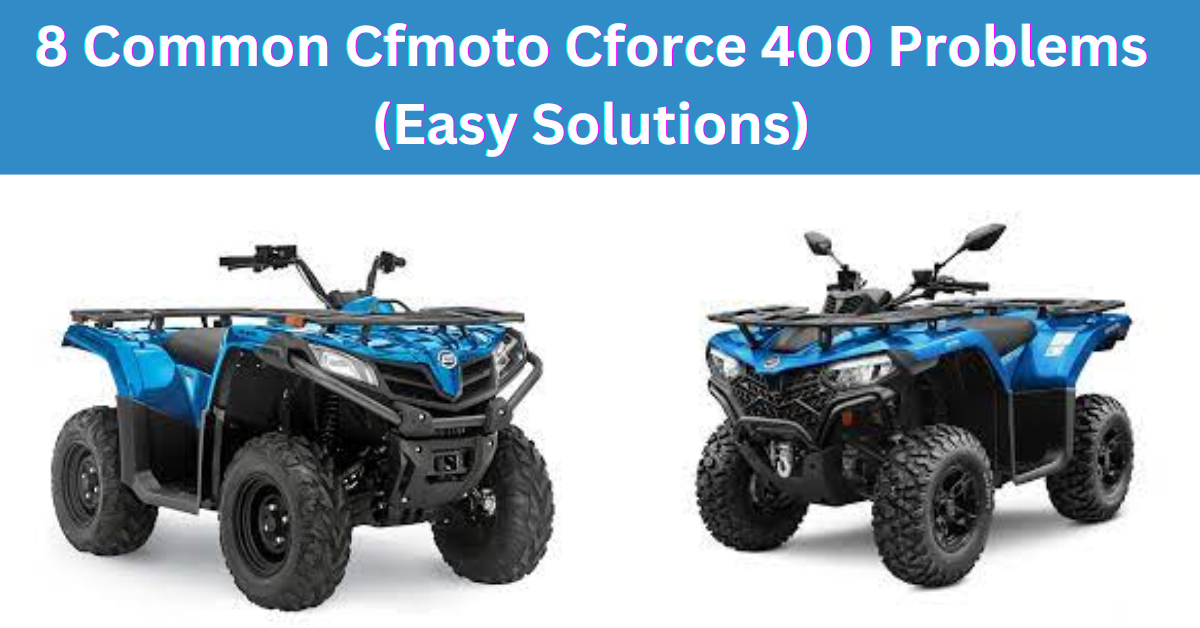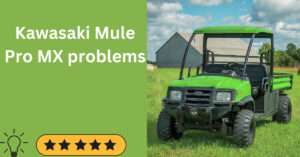If you’re considering purchasing a CFMOTO CFORCE 400, it’s essential to be aware of any potential problems associated with this popular ATV model. While the CFORCE 400 has gained a reputation for its impressive performance and versatility, like any vehicle, it does come with its fair share of issues.
In this blog post, we will tell you some of the most common cfmoto cforce 400 problems, equipping you with the knowledge needed to make an informed decision.
Overview of the CFMoto CForce 400
The CFMoto CForce 400 is a powerhouse of an ATV! It has a sleek design and delivers powerful performance. Ideal for rough terrain and smooth roads, it’s equipped with a 400cc engine to provide a thrilling ride.
This ATV comes with a robust suspension system to absorb shocks and vibrations. Plus, its sturdy frame and durable construction guarantee long-term durability.
The CFMoto CForce 400 also provides plenty of storage space. Front and rear cargo racks make it easy to bring your gear along on camping trips or outdoor adventures.
Safety features include front and rear disc brakes for efficient stopping power.
According to Off-Road.com, the CFMoto CForce 400 has been praised for its performance and reliability. It is also much more affordable than other ATVs in its class.
What are the most common problems of cfmoto cforce 400 ?
The most common cfmoto cforce 400 problems are Vapor Lock Stalling Issues, Transmission Troubles, Poor Throttle Response, Suspension System Weaknesses, Unreliable Electrical System and Brake System Challenges.
8 Common cfmoto cforce 400 problems:
Here, we discuss the 8 Common cfmoto cforce 400 problems that cfmoto cforce owners reported.
1. Vapor Lock Stalling Issues

Vapor lock occurs when fuel in the fuel lines and carburetor turns into vapor, rather than staying in its liquid form. This vaporization disrupts the fuel flow to the engine, leading to stalling or difficulty starting the vehicle.
Several factors can contribute to vapor lock in the CFMOTO CFORCE 400:
- High Temperatures: When the engine compartment gets too hot, it can cause the fuel to vaporize prematurely. This often happens during hot weather or when the engine is under heavy load for an extended period.
- Poor Ventilation: Inadequate ventilation in the fuel system can trap heat, increasing the likelihood of vapor lock. This can occur due to faulty vent lines or improper installation.
- Low Fuel Level: Running the vehicle with a low fuel level can exacerbate vapor lock issues. Less fuel in the tank means there’s less liquid to absorb heat, making vaporization more likely.
So, what can you do to address vapor lock stalling issues with your CFMOTO CFORCE 400?
- Insulate Fuel Lines: Adding insulation to the fuel lines can help reduce the heat transferred from the engine to the fuel, minimizing the chances of vaporization. Heat-resistant materials like thermal wraps or shields can be used for this purpose.
- Improve Ventilation: Ensure that the fuel system has proper ventilation to prevent heat buildup. Check for any kinks or blockages in the vent lines and clear them if necessary. Additionally, consider installing after-market venting solutions for better airflow.
- Keep Fuel Tank Full: Maintaining a higher fuel level in the tank can help mitigate vapor lock issues. Try to refill the tank before it gets too low, especially when operating the vehicle in hot conditions or during long rides.
- Cooling Modifications: Installing additional cooling components, such as fans or heat sinks, can help dissipate excess heat from the engine compartment. This can be particularly useful for users who frequently ride in hot climates or engage in demanding off-road activities.
- Fuel Additives: Another way to fix vapor lock is by using special additives in your fuel. These additives are made to stop vapor lock from happening. These additives work by altering the fuel’s properties to increase its resistance to vaporization, ensuring smoother engine operation.
2. Poor Throttle Response
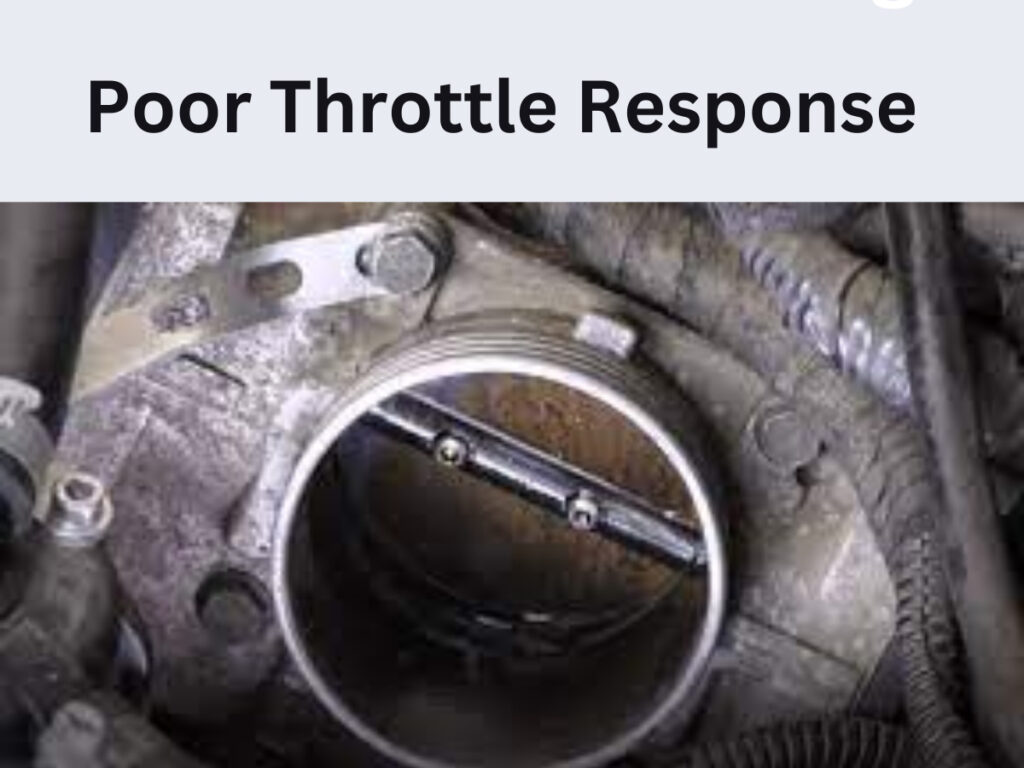
Throttle response refers to how quickly the engine reacts to your commands when you press down on the accelerator (throttle). When you push the throttle, you expect the engine to respond promptly, increasing power and speed. However, if there’s a delay or if the response feels sluggish, it can affect your driving experience and overall performance.
Several factors could contribute to poor throttle response in the CFMOTO CFORCE 400:
- Fuel System Issues: Problems within the fuel system, such as clogged fuel injectors or a dirty air filter, can restrict the flow of fuel and air to the engine, leading to sluggish acceleration.
- Electronic Throttle Control (ETC) Malfunction: The CFMOTO CFORCE 400 may utilize electronic throttle control, where sensors and electronic components manage the throttle instead of traditional mechanical linkages. If there’s a malfunction in these components, it can cause delays in throttle response.
- Engine Tuning: Sometimes, the engine’s electronic control unit (ECU) may not be calibrated optimally, leading to delayed throttle response. This could be due to factory settings or aftermarket modifications that aren’t properly adjusted.
- Mechanical Issues: Mechanical problems within the engine, such as worn-out spark plugs, a faulty throttle body, or issues with the transmission, can all impact the throttle response negatively.
- Environmental Factors: Extreme temperatures or altitude changes can affect engine performance and throttle response, particularly if the vehicle isn’t tuned to accommodate such conditions.
To address poor throttle response in your CFMOTO CFORCE 400, consider the following steps:
- Routine Maintenance: Regularly service your ATV, including changing the oil, replacing the air filter, and inspecting the fuel system components. This helps ensure proper engine function and responsiveness.
- Check Electronic Components: Have a qualified technician inspect the electronic throttle control system to identify any faults or malfunctions. They can diagnose issues with sensors, wiring, or the ECU itself.
- Tune-Up: If your CFMOTO CFORCE 400 has external modifications, ensure they’re properly tuned to optimize performance and throttle response. If not, consider reverting to stock settings or consulting a professional tuner.
- Address Mechanical Problems: If mechanical issues contribute to poor throttle response, such as worn-out parts or transmission problems, have them repaired or replaced promptly.
- Adapt Driving Habits: Be mindful of your driving habits and how they may affect throttle response. Smooth, gradual acceleration can mitigate the effects of poor throttle response.
3. Unreliable Electrical System
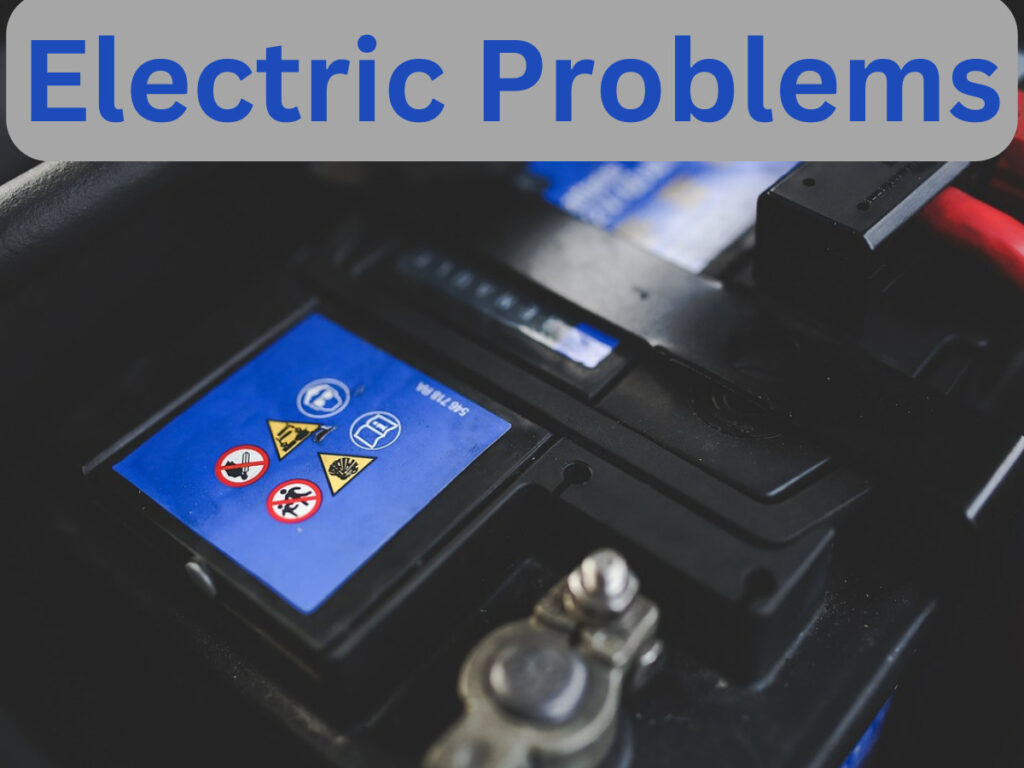
One of the most prevalent problems faced by CFORCE 400 owners is an unreliable electrical system. Many users have reported issues with components such as the starter motor, ignition switch, and electrical wiring. These problems often result in difficulties starting the ATV or experiencing intermittent electrical failures. Read It Cf Moto starting problems.
Here are several electrical problems of cf moto cforce 400 that its owner face.
1. Battery Problems:
One of the primary issues users encounter is related to the battery. The battery might fail to hold a charge, leading to starting difficulties or intermittent power loss. This could be due to prolonged periods of inactivity, faulty connections, or a worn-out battery.
Solution: Begin by checking the battery connections for any corrosion or looseness. Clean the terminals and ensure they are tightly secured. If the battery is old or unable to hold a charge, it might need replacement.
2. Charging System Malfunction:
Another common issue is a malfunctioning charging system. This can result in a drained battery, even while the vehicle is running. Faulty voltage regulators or stators are often the culprits behind this problem.
Solution: Test the voltage output from the stator and voltage regulator using a multimeter. If the readings are outside the specified range, it indicates a faulty component that needs replacement.
3. Wiring Harness Faults:
The wiring harness, responsible for transmitting electrical signals throughout the vehicle, can develop faults over time. This might lead to short circuits, erratic behavior of electrical components, or complete system failure.
Solution: Inspect the wiring harness for any signs of wear, fraying, or damage. Repair or replace any damaged sections to ensure proper electrical conductivity.
4. Ignition System Issues:
Issues with the ignition system can cause starting problems or engine misfires. Faulty ignition coils, spark plugs, or ignition switches could be the underlying causes.
Solution: Test the ignition coils and spark plugs for proper functioning. Replace any components that show signs of wear or malfunction. Additionally, check the ignition switch for continuity and replace it if necessary.
5. Fuse Box Problems:
A blown fuse can disrupt the electrical flow to various components, leading to their malfunction. Overload, short circuits, or faulty components can cause this.
Solution: Inspect the fuse box for any blown fuses and replace them with ones of the correct rating. Look into why the fuse failed so it doesn’t happen again in the future.
6. Grounding Issues:
Poor grounding can result in erratic electrical behavior, including intermittent power loss or device malfunctions.
Solution: Ensure all ground connections are clean, tight, and free from corrosion. Repair or replace any damaged grounding wires to restore proper electrical grounding.
4. Cfmoto Cforce 400 Overheating Problems
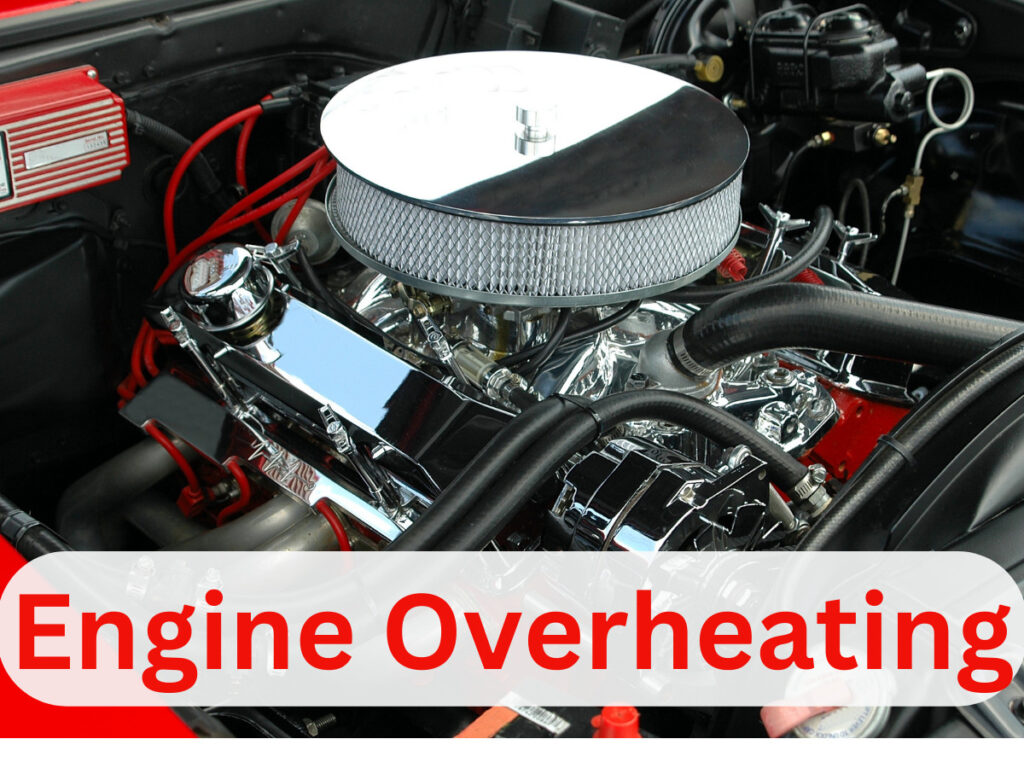
Another common problem reported by CFORCE 400 owners is overheating. Some users have experienced difficulties with the cooling system, leading to engine overheating and potential damage. This issue can be caused by various factors, including a malfunctioning thermostat, coolant leaks, or a clogged radiator.
Several factors could contribute to overheating, including:
- Coolant Levels: One of the primary reasons for overheating in any vehicle is low coolant levels. Coolant helps regulate the engine’s temperature by absorbing heat and transferring it away from critical components. If your CFORCE 400 is overheating, check the coolant level in the reservoir. If the level is low, fill it up to the recommended amount.
- Coolant Leaks: Even if your coolant level seems adequate, leaks in the cooling system can lead to overheating. Inspect the hoses, radiator, water pump, and connections for any signs of leaks. Leaking coolant can quickly lead to a loss of cooling efficiency, causing the engine to overheat.
- Radiator Blockage: Dirt, mud, and debris can accumulate in the radiator, blocking airflow and inhibiting cooling. Inspect the radiator fins for any obstructions and clean them thoroughly if necessary. Additionally, make sure the radiator fan is functioning correctly, as it helps dissipate heat during low-speed or stationary operation.
- Ambient Temperature: Operating your CFORCE 400 in extremely high ambient temperatures can also lead to overheating, especially during heavy use or towing. In hot weather conditions, take frequent breaks to allow the engine to cool down and monitor the temperature gauge closely.
- Riding Style: Aggressive riding or continuous operation at high speeds can put a strain on the engine, leading to increased heat generation. Avoid prolonged periods of high-speed riding, especially in challenging terrain, and give the engine time to cool down between demanding maneuvers.
- Improper Maintenance: Neglecting routine maintenance tasks, such as oil changes and air filter replacement, can contribute to overheating problems. Be sure to follow the maintenance schedule recommended by the manufacturer and deal with any problems right away.
- Thermostat Malfunction: A malfunctioning thermostat can disrupt the engine’s cooling system, leading to erratic temperature fluctuations and overheating. If you suspect a faulty thermostat, have it inspected and replaced if necessary by a qualified mechanic.
5. Transmission Troubles
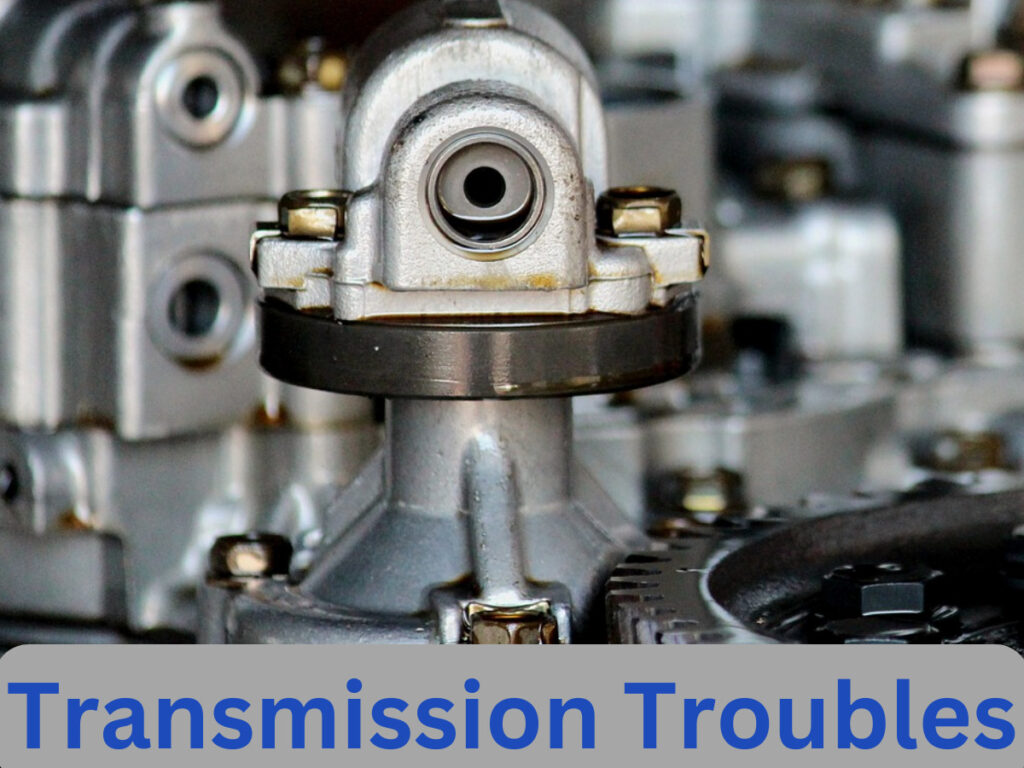
When it comes to the CFMoto CFORCE 400, transmission issues can be frustrating and concerning. Your ATV’s transmission is crucial for smooth operation, transferring power from the engine to the wheels efficiently. If you’re experiencing troubles with your CFMoto CFORCE 400 transmission, it’s essential to understand the potential causes and how to address them.
One common problem that users might encounter is difficulty shifting gears. This could manifest as gears grinding or feeling stiff when trying to change them. Several factors could contribute to this issue:
- Low Transmission Fluid: Just like in a car, low transmission fluid levels can lead to poor shifting performance. Checking and topping up the transmission fluid to the appropriate level might resolve the problem.
- Worn Clutch Components: The clutch is responsible for engaging and disengaging the transmission from the engine. Over time, clutch plates can wear out, leading to slipping or difficulty engaging gears. Replacing worn clutch components might be necessary to restore proper function.
- Misadjusted Clutch: Sometimes, the clutch may be improperly adjusted, leading to issues with gear engagement. Adjusting the clutch according to the manufacturer’s specifications can help alleviate this problem.
- Transmission Damage: In some cases, internal damage to the transmission components could be the root cause of shifting troubles. This might require a more extensive inspection by a qualified mechanic to diagnose and repair.
6. Suspension System Weaknesses
The suspension system is another area where CFORCE 400 owners have reported problems. Some users have found the stock suspension to be too stiff, resulting in a rough and uncomfortable ride, especially on uneven terrains. Here are several issues that its owner face.
- Limited Travel Range: The suspension system of the CFORCE 400 may have a limited travel range, meaning it doesn’t absorb bumps and shocks as effectively as some other models. This can result in a rougher ride, especially on uneven terrain or rough trails.
- Stiffness: Some users report that the suspension feels stiff, which can make the ride uncomfortable, particularly over longer distances or on rough terrain. Stiff suspension can also contribute to decreased traction and stability, especially when navigating challenging obstacles.
- Lack of Adjustability: Unlike more advanced suspension systems, the CFORCE 400’s suspension may lack adjustability options. This means users have limited control over factors such as damping, preload, and rebound, which can make it challenging to customize the ride experience to suit different terrains and preferences.
- Durability Concerns: In some cases, users have reported durability concerns with the suspension components of the CFORCE 400. This can include issues such as premature wear and tear, bushing failures, or even component breakage under heavy use or rough riding conditions.
- Bottoming Out: Due to its limited travel range and stiffness, the CFORCE 400’s suspension is more prone to bottoming out, especially when navigating rough terrain or when carrying heavy loads. Bottoming out can not only compromise ride comfort but also potentially damage suspension components or other parts of the ATV.
- Maintenance Requirements: Like any suspension system, the CFORCE 400’s suspension requires regular maintenance to ensure optimal performance and longevity. However, some users may find the maintenance requirements to be more intensive or challenging compared to other models, particularly if they lack experience or access to specialized tools.
Also Read: 8 Most Common Cfmoto Cforce 600 Problems
7. CF Moto Brake Problems
Several CFORCE 400 users have encountered issues with the brake system. Problems range from ineffective braking power to squeaking or grinding noises during braking. These issues can be attributed to various factors, including worn brake pads, improper adjustment, or contamination of brake components.
Brake Fade:
One common problem is brake fade, where the brakes lose effectiveness over time or under heavy use. This can happen due to various reasons such as overheating of brake pads or brake fluid, worn-out brake components, or improper adjustment of the brake system.
Solution: To address brake fade, start by checking the brake pads for wear and tear. Replace them if necessary. Make sure the brake fluid is at the right level and doesn’t have any dirt or other substances in it. Also, inspect the brake discs for any signs of damage or warping. Adjust the brake system according to the manufacturer’s specifications.
Spongy Brakes:
Another issue riders face is spongy brakes, where the brake lever or pedal feels soft and lacks responsiveness. This can occur due to air bubbles in the brake lines, worn-out brake hoses, or a deteriorated brake master cylinder.
Solution: Begin by bleeding the brake system to remove any air bubbles. If the problem persists, inspect the brake hoses for cracks or leaks. Replace them if necessary. Additionally, check the brake master cylinder for any signs of damage or malfunction. Rebuilding or replacing the master cylinder may be required.
Brake Drag:
Brake drag happens when the brakes don’t fully disengage after releasing the brake lever or pedal, causing the vehicle to feel sluggish or reducing fuel efficiency.
Solution: Inspect the brake calipers for any debris or corrosion that may be hindering their movement. Clean and lubricate the caliper pins and pistons as needed. Check the brake pads for proper installation and ensure they are not sticking to the brake discs. Adjust the brake calipers and brake lever or pedal according to the manufacturer’s specifications.
Uneven Braking:
Uneven braking occurs when one wheel brakes more or less than the others, leading to instability and reduced stopping power.
Solution: Begin by inspecting the brake pads and discs on all wheels for wear and tear. Replace any worn-out components. Check the brake calipers for proper alignment and functionality. Adjust the brake system as needed to ensure even braking distribution across all wheels.
Grinding Noise:
If you hear a grinding noise when applying the brakes, it could indicate worn-out brake pads or damaged brake discs.
Solution: Inspect the brake pads and discs for excessive wear or damage. Replace any components that show signs of deterioration. Ensure proper installation and alignment of the brake pads and discs to prevent further noise issues.
Read more About it Cf moto Brake System Problems
8. Lack of Quality Control
Quality control is crucial in manufacturing to ensure that products meet certain standards of excellence. However, in the case of CFMoto CFORCE 400, there have been consistent reports of issues related to quality control. These issues manifest in various aspects of the ATV, including build quality, reliability, and safety features.
Build Quality:
One of the primary concerns with CFMoto CFORCE 400 is its build quality. Users have reported instances of parts breaking prematurely, indicating potential weaknesses in the manufacturing process. From components like handlebars to engine parts, instances of poor craftsmanship have been noted, leading to questions about the durability of the vehicle.
Reliability:
Reliability is essential for any vehicle, especially for off-road ATVs like the CFMoto CFORCE 400. However, users have experienced frequent breakdowns and mechanical failures, which can be attributed to underlying quality control issues. These reliability issues not only inconvenience users but also raise safety concerns, particularly during off-road excursions where a breakdown could pose significant risks.
Safety Features:
Another area where quality control issues have been observed is in the safety features of the CFMoto CFORCE 400. While the ATV is equipped with standard safety features, such as brakes and lights, there have been reports of malfunctions and failures. This compromises the overall safety of the vehicle and puts users at risk of accidents or injuries.
Implications for Users:
The lack of quality control in CFMoto CFORCE 400 has several implications for users:
- Safety Concerns: Users may feel apprehensive about using the ATV, especially in challenging terrain, due to concerns about its reliability and safety features.
- Maintenance Costs: Frequent breakdowns and mechanical issues can result in higher maintenance costs for users, as they may need to repair or replace faulty components more frequently.
- Resale Value: The reputation of CFMoto CFORCE 400 being prone to quality control issues can impact its resale value, making it harder for users to recoup their investment when selling the ATV.
Cfmoto Cforce 400 top speed
The top speed of the CFMOTO 400 is around 50-60 mph (80-96 km/h) depending on the model and any modifications made to it. However, it is important to note that riding at high speeds on an ATV can be dangerous, especially on pavement or with the wrong tires.
Cfmoto Cforce 400 Oil Capacity
The oil capacity for the CFMoto CForce 400 depends on the specific model year:
2015-2020 CFMoto CForce 400:
- Oil capacity: 2.4 Quarts (2.3 Liters)
- Recommended oil: SAE 15W-40, API SG or higher
2021-Present CFMoto CForce 400:
- Oil capacity: 3.0 Quarts (2.9 Liters)
- Recommended oil: SAE 10W-40, API SN or higher
Who Makes Cfmoto Cforce 400
The CFMoto CForce 400 is manufactured by CFMoto itself.
CFMoto, formally known as Zhejiang Chunfeng Power Co., Ltd., is a Chinese manufacturer of various motorsports vehicles, including engines, motorcycles, all-terrain vehicles (ATVs), and side-by-sides (SxS). The company, headquartered in Hangzhou, China, has established itself as a major player in the global market, offering competitive and feature-rich vehicles.
Conclusion
The CFMoto CForce 400 has its issues, but it does have some redeeming qualities. For instance, it offers strong power and versatility. Plus, its design prioritizes functionality and performance.
It’s tough construction and advanced suspension system make it perfect for handling tough terrain. In addition, it comes with storage compartments and towing capabilities.
However, people have reported maintenance issues with the CFMoto CForce 400. These issues range from electrical to mechanical malfunctions. This may leave users in need of frequent repairs. It’s essential to consider this before buying the vehicle.
If you’re experiencing any of these problems or have further questions, it’s always advisable to consult with authorized CFMOTO service centers or experienced mechanics who specialize in ATVs. Ride safe and enjoy the thrill of your CFORCE 400 adventure!
Recommendations for CFMoto CForce 400 Owners
Owners of the CFMoto CForce 400 have a few things to keep in mind.
- Regular maintenance and servicing are a must to make sure your CFMoto CForce 400 lasts. Get check-ups from authorized service centers regularly.
- Check and clean the air filter every so often. Replace it if it’s clogged.
- When off-road, adjust tire pressure for the terrain. This boosts traction and reduces punctures.
- Stay updated with CFMoto’s website for any recall notices or service bulletins. Address them immediately to avoid future problems.
- Protect your vehicle from bad weather with a cover or by storing it in a covered area.
CFMoto has done a lot in the last few years to improve their models. They’ve taken customer feedback and used it to make changes in manufacturing and quality control.
